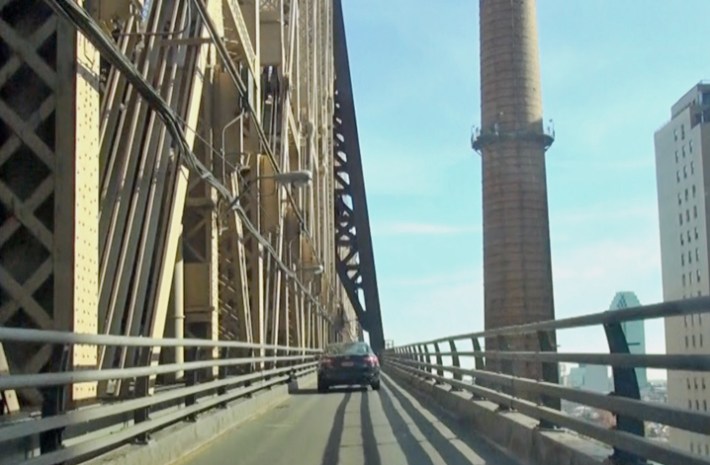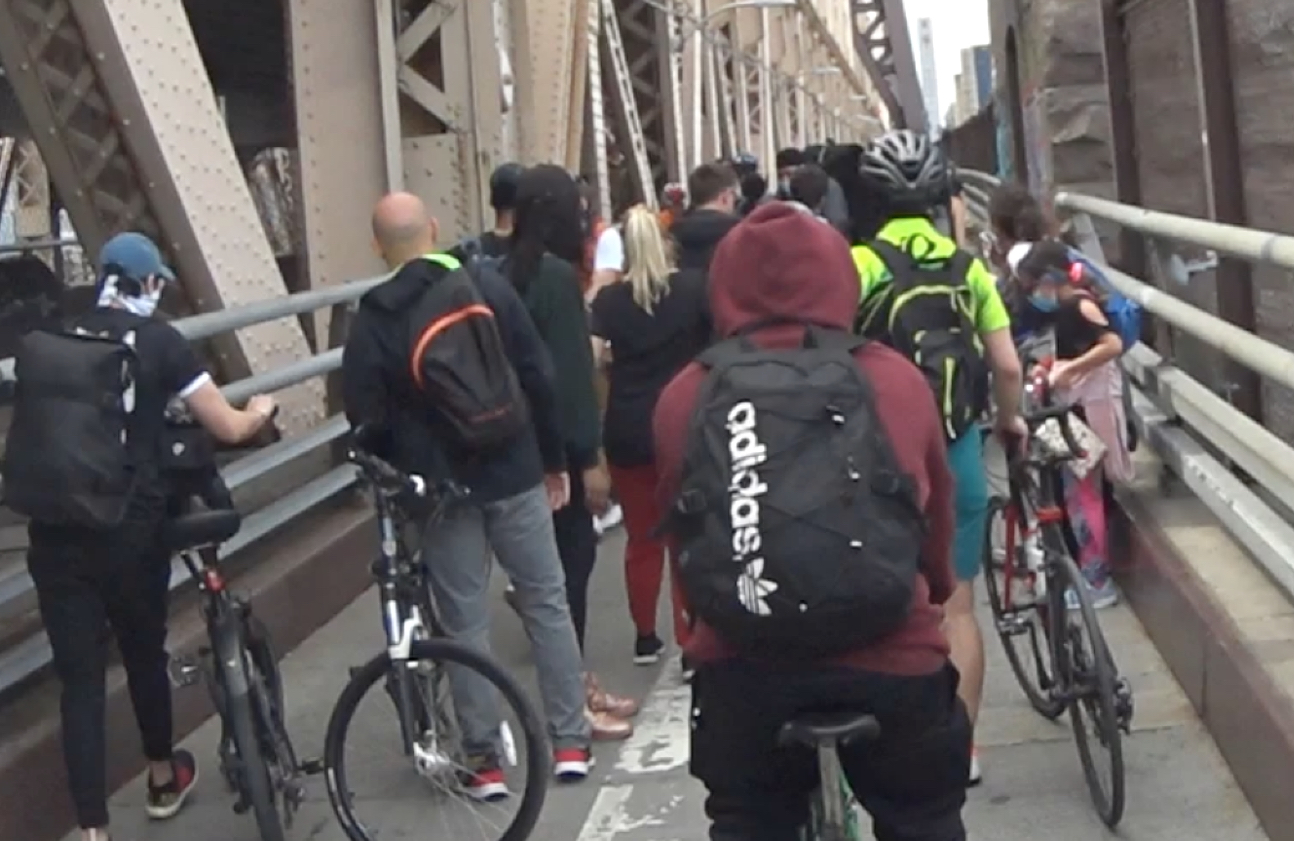Every day, thousands of cyclists and pedestrians cram into a 10-foot-wide path on the Queensboro Bridge. It is a tight squeeze on the bridge’s North Outer Roadway. Cyclists going in both directions get a combined six feet, and foot traffic is given a mere four feet. This violates the Department of Transportation’s Street Design Manual and modern design standards that call for eight to 12 feet of walking space in high-density areas and 12 feet for two-way bike lanes. In an age of COVID-19, with pedestrian space at a premium and bike ridership surging, congestion on the Queensboro undermines social distancing. Thankfully, a quick and low-cost solution is readily available: converting the Queensboro’s under-used South Outer Roadway to a dedicated pedestrian walkway.
We are two candidates for New York City Council, each seeking to represent the neighborhoods on opposite sides of the bridge — Billy in Manhattan, Julia in Queens. The Queensboro Bridge unites our boroughs, and we are united by the belief that we must accelerate a plan in which the DOT has expressed interest. Pedestrianizing the South Outer Roadway would free up the bridge’s North Outer Roadway for cyclists, while still leaving eight lanes for cars.
Even before COVID, the DOT acknowledged that it supported this idea. After all, motor-vehicle traffic on the bridge declined 8.5 percent from 2006 to 2016, while bike trips doubled and pedestrian use tripled, worsening crowding and resulting in injuries and near-crashes. The pandemic, which caused a global bike shortage as demand surged, has only added to the urgency of making the Queensboro friendly for cyclists and pedestrians. Many essential workers commute between Queens and Manhattan, including low-income bike delivery workers and those working in the hospital corridor on Manhattan’s East Side. Indeed, at the height of the pandemic, the Citi Bike station just nine blocks north of the bridge, at 68th Street and First Avenue, became the city’s busiest station because of its proximity to two major hospitals.
In June and July, biking along the Queensboro rose by 20 percent compared to the same time last year. New Yorkers have responded to the importance of social distancing by finding alternative ways of getting around. The DOT must be similarly proactive, and anticipate residents’ and commuters’ needs as the city reopens. New Yorkers are not going to tolerate delayed trains and buses packed to the gills. We must make sure the infrastructure is in place that will allow them to choose alternative forms of transportation, like cycling and walking. The question is, will our city respond?

The DOT has indicated its receptiveness to this proposal, but it is not prepared to enact it now. The DOT recently argued it must pay for more fencing along the South Outer Roadway, or SOR. While the Queensboro’s existing barrier is taller than the Triborough Bridge’s barrier, Council Members Ben Kallos in Manhattan and Jimmy Van Bramer in Queens have nevertheless stepped up, recently confirming that they would gladly fund the modest fencing cost if the DOT won’t. DOT Commissioner Polly Trottenberg has said she is “heartened” by this development and signaled a willingness to meet with the Council members and revisit DOT’s assumptions.
We’ve finally made progress with the outer roadway of then Queensboro Bridge. Thanks to @StreetsblogNYC for pushing so hard & proud to have partnered with my colleague @kallos to put up money to get this done. Talk is cheap. Action matters. https://t.co/d6d4hGS5pw
— Jimmy Van Bramer (@JimmyVanBramer) August 28, 2020
The DOT is also prioritizing planned repairs to the bridge. But, to govern is to balance priorities. This work can be completed while maintaining the existing bike path, as well as the pedestrian path we propose here. This would balance the DOT’s goals with several other key priorities of the de Blasio administration: facilitating social distancing, advancing the Vision Zero agenda, creating 100 miles of open streets, and encouraging alternative and sustainable modes of transportation to reduce congestion and improve air quality as part of a Green New Deal.
In her book, "Streetfight," former DOT Commissioner Janette Sadik-Khan keenly observed that our streets could be transformed for the simple cost of paint or concrete. Transformational changes do not require millions of dollars or complex reconstruction. Those lessons apply here. New York City can transform one of the Queensboro Bridge’s 10 lanes into one of the world’s most breathtaking walkable spans. With the low-cost of tools we already have, we can create safe, sustainable transportation modes that will be good for our planet, our people, and our public health. The view isn’t too bad, either.
Billy Freeland (@BillyFreelandNY) is a candidate for City Council in District 5, which includes the Upper East Side, Midtown East, and Roosevelt Island. Julia Forman (@julia_forman) is a candidate for City Council in District 26, which includes Long Island City and Astoria.






